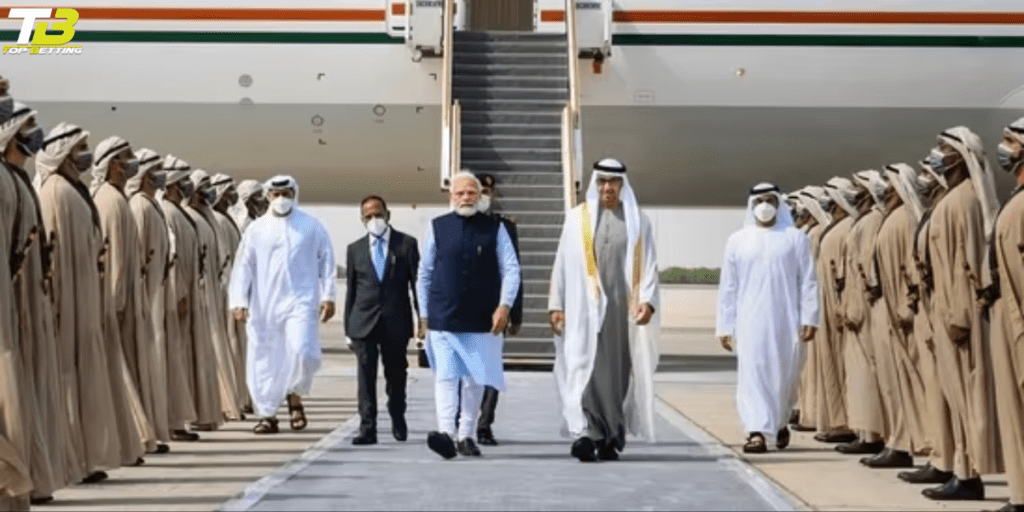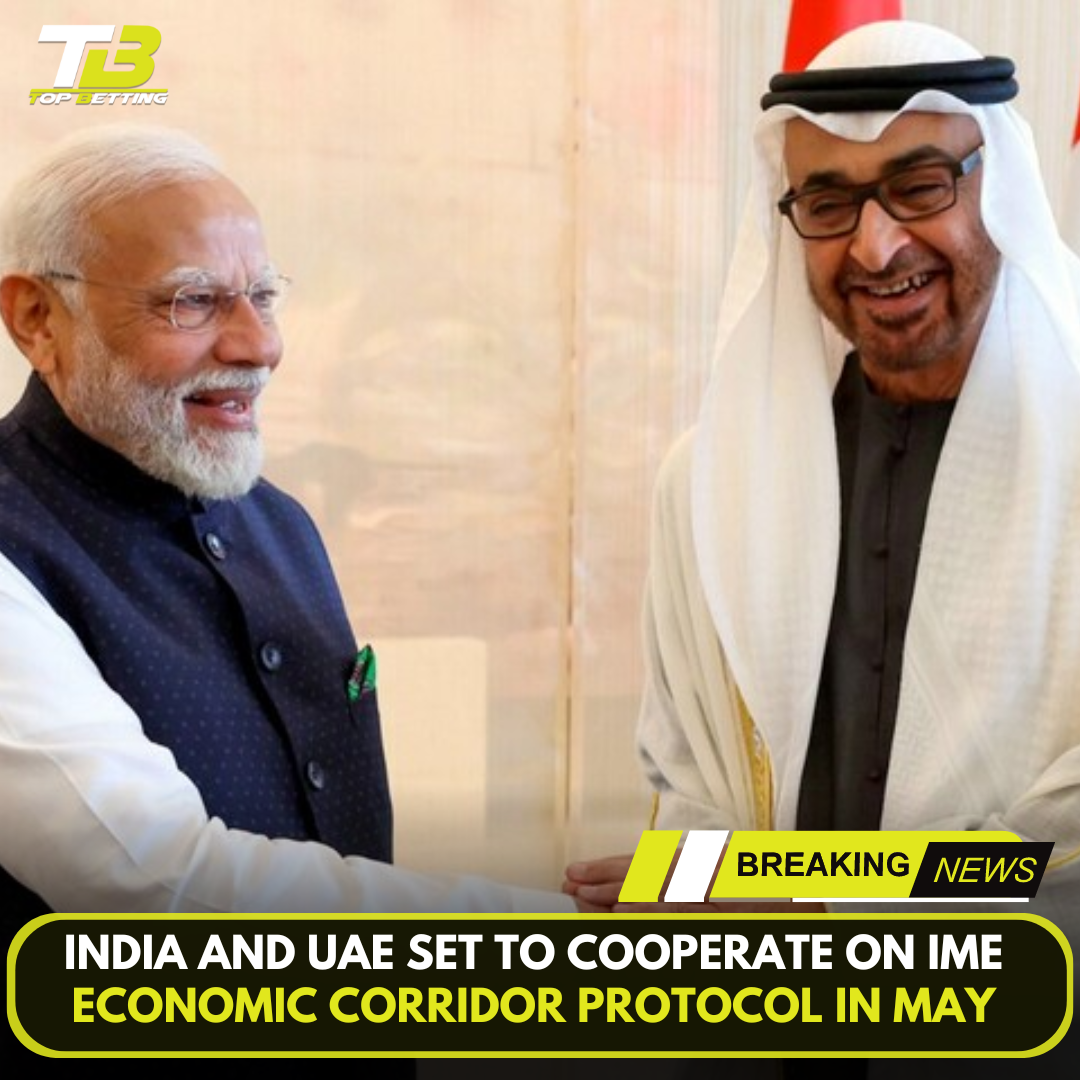
India-UAE will work on IME Economic in May
India and the United Arab Emirates (UAE) have launched an ambitious project to establish the India-Middle East-Europe Economic Corridor (IMEC). This corridor aims to enhance trade and economic cooperation between India, UAE, Jordan, Saudi Arabia and Israel, with the final destination being Europe. IMEEC has received support from the Biden administration and is ready to integrate the markets of these countries. In May, both countries will start working on protocols for the first phase of this trade corridor, which will facilitate faster clearance of consignments and boost bilateral trade.
Background and objectives
IMEEC was conceptualized by Indian Prime Minister Narendra Modi and UAE President Sheikh Mohammed bin Zayed Al Nahyan. Its objective is to create an uninterrupted trade route connecting India to Europe through the Middle East, thereby enhancing economic ties between these regions. The corridor will not only boost trade but also strengthen diplomatic ties and promote cultural exchange.
The primary objectives of IMEEC are as follows:
Increase in trade: The establishment of IMEEC will significantly boost bilateral trade between India and UAE, which currently stands at US$ 85 billion and is continuously growing. This corridor will facilitate the movement of goods from Indian ports to European destinations, ensuring smooth flow of trade.
Integration of markets: IMEEC will integrate the markets of India, UAE, Jordan, Saudi Arabia and Israel, creating a comprehensive economic network. This integration will increase investment opportunities and economic growth for all participating countries.
Strategic Partnership: IMEEC will strengthen the strategic partnership between India, UAE and other countries included in the corridor. Closer cooperation in areas such as security, technology and energy will contribute to regional stability and development.
important milestones
The development of IMEEC has reached important milestones, highlighting the commitment of India and the UAE to this ambitious project. Here are some of the major milestones:
Inter-Governmental Framework Agreement: On February 14, Prime Minister Narendra Modi and UAE President Sheikh Mohammed bin Zayed Al Nahyan signed an Inter-Governmental Framework Agreement on IMEEC. This agreement laid the foundation for further cooperation and collaboration.
Senior Official Meeting: The first round of senior official meetings between India and UAE is scheduled to take place till May 15. These meetings will focus on establishing protocols for the first phase of IMEEC, including virtual trade corridors and rapid clearance of goods.
Bilateral trade growth: Bilateral trade between India and the UAE has been growing steadily and is currently valued at US$85 billion. IMEEC is expected to further enhance trade relations between the two countries and increase trade volumes.
Support from the Biden Administration: IMEEC has received support from the Biden Administration, which recognizes the potential economic benefits and regional integration. This support is critical to the success of the corridor.
Corridor Route and Logistics
IMEEC will connect many countries, creating a comprehensive trade route from India to Europe. Here is an overview of the corridor route and logistics:
Countries covered: IMEEC will connect India, UAE, Jordan, Saudi Arabia and Israel with Europe as the final destination. These countries will cooperate to ensure smooth trade flows and efficient logistics.
Port connections: Goods containers will be transported from Indian ports like Mundra to Fujairah port in UAE. From there, they will proceed to European destinations, including ports in countries like Italy and France.
Virtual Trade Corridors: Virtual trade corridors will be set up to speed up the movement of goods. These corridors will ensure that containers emptied at Indian ports are not re-opened at Fujairah Port in UAE, thereby enabling seamless transportation to European ports.
Railway Connectivity: IMEEC includes railway connectivity between Jordan, Saudi Arabia and Israel. Containers from these countries will be transported via rail to Israel’s Haifa port, from where they will continue their journey to European ports.
Benefits and Implications
The establishment of IMEEC has many benefits and implications for the participating countries. Here’s a look at some of them:
Enhanced Trade Opportunities: IMEEC will create new avenues for trade and investment, benefiting businesses in India, the UAE and other participating countries. Better connectivity and streamlined logistics will make business more efficient and cost-effective.
Economic growth and job creation: Increased trade and investment as a result of IMEEC will contribute to economic growth and job creation in all participating countries. It will stimulate various sectors including manufacturing, logistics and services.
Diversification of trade partnerships: IMEEC will facilitate diversification of trade partnerships for India and the UAE, thereby reducing dependence on traditional markets. This diversification will increase economic flexibility and open new opportunities for cooperation.
Strengthening regional integration: IMEEC will promote regional integration by connecting the countries of the Middle East to Europe. This integration will promote cultural exchange, diplomatic cooperation and regional stability.

conclusion
The cooperation between India and the UAE on the IME Economic Corridor Protocol is an important step towards enhancing trade and economic cooperation between these regions. IMEEC will create a seamless trade route, connecting India to Europe via the Middle East. It will boost bilateral trade, strengthen strategic partnership and promote regional integration. With the support of the Biden Administration and a clear roadmap for the development of the corridor, IMEEC holds promising prospects for economic growth and development in India, the UAE and other participating countries.











